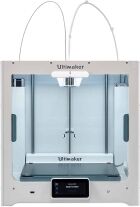Best Carbon Fiber 3D Printer: How to Print Carbon Fiber Filament (original) (raw)
You can trust PC Guide: Our team of experts use a combination of independent consumer research, in-depth testing where appropriate - which will be flagged as such, and market analysis when recommending products, software and services. Find out how we test here.
Whilst it may be more niche than conventional 3D printing, there is certainly a market for finding the best carbon fiber 3D printer. Prized as a material stronger than many metals and still lightweight, carbon fiber is ideal for the most durable of 3D print models, though printers capable of rendering it are harder than average to come by.
We’ve put together a guide on the best 3D printers for carbon fiber, in order to help narrow the search. So regardless of whether you are new to 3D printing or a veteran wanting to expand their material selection, you’re certain to find the right 3D printer for you!
AMD Ryzen 7 9800X3D returns to Amazon
AMD's Ryzen 7 9800X3D is finally back in stock on Amazon.US. Remember, use the "other sellers" button to ensure you get the best price through Amazon.
Prices correct as of November 14th, 2024.
Ultimaker S5
- Build Volume: 330mm x 240mm x 300mm
- Filament: PLA, ABS, CPE, Nylon, Carbon Fiber
- Connectivity Technology: USB, Ethernet, WiFi
- Filetype: STL, OBJ, X3D, 3MF
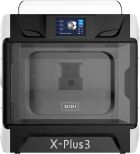
Best Budget Carbon Fiber 3D Printer
QIDI Technology X-Plus 3
- Build Volume: 270mm x 200mm x 200mm
- Filament: PLA, ABS, PETG, PA, ASA, Carbon Fiber
- Connectivity Technology: USB
- Filetype: STL
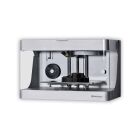
Best Industrial Carbon Fiber 3D Printer
Markforged Mark Two
- Build Volume: 320mm x 132mm x 154mm
- Filament: PLA, Nylon, Carbon Fiber, Fiberglass
- Connectivity Technology: USB
- Filetype: STL
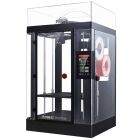
Best Large-Volume Carbon Fiber 3D Printer
Raise3D Pro2 Plus
- Build Volume: 305mm x 305mm x 605mm
- Filament: PLA, PETG, ABS, PC, Wood, Nylon , TPU, PVA, Carbon Fiber, Metal
- Connectivity Technology: USB, WiFi Direct
- Filetype: STL
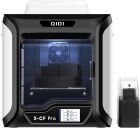
Best Mid-Range Carbon Fiber 3D Printer
QIDI Technology X-CF Pro
- Build Volume: 300mm x 250mm x 300mm
- Filament: PLA, ABS, PETG, Nylon, Carbon Fiber
- Connectivity Technology: USB, WiFI
- Filetype: STL
How We Picked the Best Carbon Fiber 3D Printer
3D printing is a difficult art even at the best of times, and a carbon fiber printer can make the process more difficult. We’ve focused on ease-of-use as a primary factor in our carbon fiber 3D printer choices, but haven’t forgotten about quality, build volume or print speeds – the usual suspects of 3D printing. There are also great additional features that are always appreciated in a 3D printer, such as automated leveling or a filament run-out detection system: printers with these are always worthwhile.
Of course, there are many other materials to 3D print with, and carbon fiber 3D printers aren’t limited to just carbon fiber. We’ve valued printers that have an array of compatible filaments. Last but not least, the price of the 3D printer also played a key factor: budget-friendliness and value-for-money accounted into our choices, for a diverse but desirable list of 3D printers for carbon fiber.
Editor’s Pick
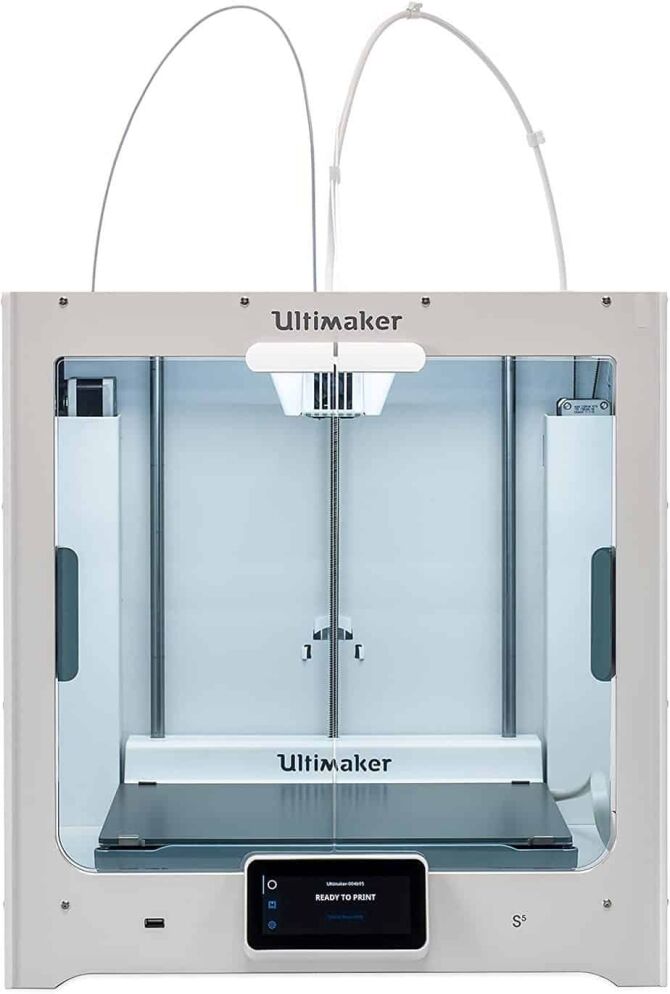
Specifications
- Build Volume: 330mm x 240mm x 300mm
- Filament: PLA, ABS, CPE, Nylon, Carbon Fiber
- Connectivity Technology: USB, Ethernet, WiFi
- Filetype: STL, OBJ, X3D, 3MF
What We Think
A great median of print quality, compatibility and versatility, the S5 is a top-notch 3D printer for a wide range of filament options.
Reasons to Buy
- IDEX technology – as a dual extruder 3D printer, this unit can print with far more versatility than other contemporary printers.
- Specialist materials – not just a carbon fiber 3D printer, the S5 has support for a diverse range of niche filaments.
Reasons to Avoid
- Slow print speeds – even with dual extruders, the print speed on the S5 is unimpressive.
The Ultimaker S5 tops our list of the best carbon fiber 3D printer, and for good reason. Designed to slide into professional 3D printing setups, the Ultimaker S5 is by no means cheap even compared to some professional 3D printers. It’s a far more manageable expense given the excellent overall print quality, the range of top features, and the work Ultimaker put in to make using the printer an utter breeze.
The Ultimaker S5 features a sizable build volume of 330mm x 240mm x 300mm, making for appreciably large prints. A consistent quality level applies to all supported material types: notably carbon fiber-based filament, but also more specialized materials such as CPE+ or Nylon. The heated glass build plate makes for stable builds, and the automated leveling ensures a minimal human component. If you invest in the S5’s additional ruby-coned Print Core nozzle, the quality is maximized for the best results.
If we had to point out a flaw, the S5 is slightly slower than average for a 3D printer – especially with carbon fiber. Considering the price point, this may not be the model to invest in if you need fast turnarounds on your models. However, we found the compromise reasonable and are still happy to call this the best carbon fiber 3D printer!
Best Budget Carbon Fiber 3D Printer
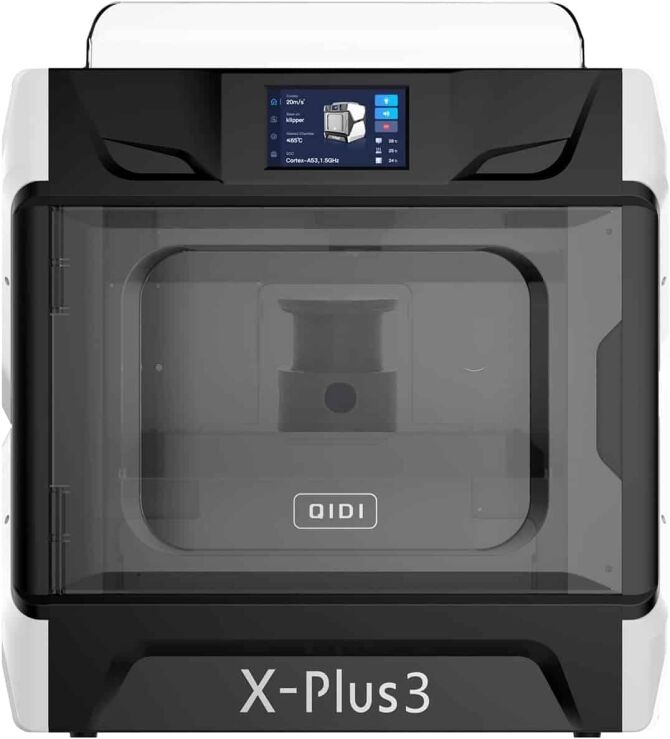
Specifications
- Build Volume: 270mm x 200mm x 200mm
- Filament: PLA, ABS, PETG, PA, ASA, Carbon Fiber
- Connectivity Technology: USB
- Filetype: STL
What We Think
This more affordable 3D print solution allows for high-end carbon fiber printing without high-end prices.
Reasons to Buy
- Highly stable – the rigid frame and build plate ensures that designs are unaffected by movement or sudden jolts.
- Fast chamber heating – reaching 60℃ in 25 minutes means you spend less time waiting to print.
Reasons to Avoid
- Requires specialist nozzle for carbon fiber – you’ll need to invest in a separate nozzle in order to use this 3D printer for carbon fiber.
Reading our brief assessment of the 3D printers above, you may be getting the sense that carbon fiber printing is strictly reserved for professional outfits willing and able to invest thousands of dollars. While this is primarily the case, especially to obtain the best print results, far more affordable hobbyists-grade printers capable of handling carbon fiber projects exist, such as the QIDI X-Plus 3.
With a super-sturdy aluminum frame and assisted leveling, you’ll need an earthquake to jostle the X-Plus 3 mid-print. We named it as one of the best ABS 3D printers due to its high print speeds and capacity for high temperatures – though you’ll need a separate specialist nozzle for carbon fiber. With WiFi connectivity and filament run-out detection, this is a great budget option for those unable to spend tens of thousands on a carbon fiber 3D printer!
However, the X-Plus 3 isn’t purpose-built for carbon fiber, and requires a specialist nozzle in order to print with it. It’s a small hurdle to overcome, however, and we still recommend the X-Plus 3 as a top 3D printer for carbon fiber.
Best Industrial Carbon Fiber 3D Printer
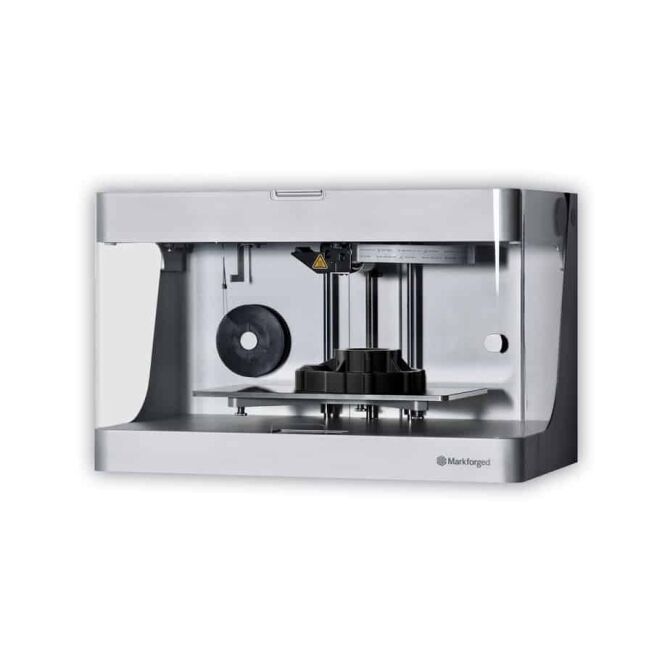
Specifications
- Build Volume: 320mm x 132mm x 154mm
- Filament: PLA, Nylon, Carbon Fiber, Fiberglass
- Connectivity Technology: USB
- Filetype: STL
What We Think
This industrial 3D printer packs top-notch performance, making for stunning 3D prints with carbon fiber.
Reasons to Buy
- Industrial-grade results – prints are rendered with exceptional detail and quality.
- Ideal for high-strength prints – the supported filament for the Mark Two are all highly durable materials.
Reasons to Avoid
- Limited build volume – the 320mm x 132mm x 154mm build volume is far from the most accommodating on the market.
The continuous fiber Markforged Mark Two condenses an industrial-grade machine down to a desktop form factor, to produce high-grade prints that unify Markforges’s nylon-micro carbon composite and fiber of the user’s choice, including carbon fiber via a dual extruder arrangement. Though it is by no means cheap, the innovation on display in this carbon fiber 3D printer is hard to beat!
Print resolution ranges from a minimum of 100 microns to 200 microns, allowing for fine details and larger hefty layer prints. Results boast high tensile strength, superb surface finish, and precise details, all with the lightweight attributes provided by carbon fiber – suitable for a wide range of industrial applications, consumer-grade products, and versatile replacements for machined aluminum parts. Material support extends to carbon fiber, fiberglass, and kevlar, all prized for durability, strength, and stiffness. We also like the proprietary browser-based Eiger Cloud slicing software provided alongside the Markforged Mark Two. The Eiger Slicer software strikes a careful balance between ease of use and advanced options to hone in on the subtleties of producing high-quality parts.
That said, the build volume is noticeably small at the price point: the premium quality of this carbon fiber 3D printer is somewhat limited by the size. For an industrial 3D printer for carbon fiber, the Markforged Mark Two is the ultimate choice!
Best Large-Volume Carbon Fiber 3D Printer
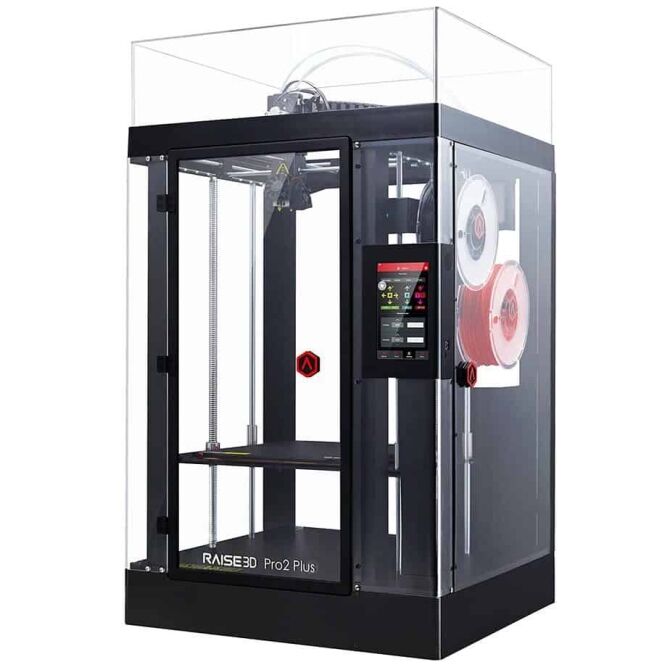
Specifications
- Build Volume: 305mm x 305mm x 605mm
- Filament: PLA, PETG, ABS, PC, Wood, Nylon , TPU, PVA, Carbon Fiber, Metal
- Connectivity Technology: USB, WiFi Direct
- Filetype: STL
What We Think
For a more useful build volume, the Pro2 Plus is able to house even larger 3D prints – albeit vertical ones.
Reasons to Buy
- Superior build volume – the 305mm x 305mm x 605mm is ideal for producing larger-scale models or designs.
- Broad filament support – you aren’t limited to high-strength materials like carbon fiber with the Pro2 Plus.
Reasons to Avoid
- Inconvenient design – along with having to print vertically, the Pro2 Plus’ spool holders can also be challenging to use.
For larger-format carbon fiber prints, we recommend the Raise3D Pro2 Plus and its colossal 305mm x 305mm x 605mm build volume which is particularly well equipped for projects that require ample vertical space.
Like the Ultimaker 5S, carbon fiber printing on the Raise3D Pro2 Plus requires a quick swap to a hardened nozzle suitable for abrasive composite materials. It’s quick to do, however, and extends the versatility of this already-impressive machine. Thanks to the high heat capability of this 3D printer, there is a long list of supported filaments beyond carbon fiber, including go-to filaments such as ABS. You can even see your works-in-progress thanks to a built-in camera.
We’re not huge fans of the filament spools on this model, however. It’s perplexing that a printer focused on large-format prints doesn’t have spools capable of holding large quantities of filament. It can be overcome with some creative thinking, but it is an issue we don’t think we should be having. If you can overcome this inconvenience, however, the Raise3D Pro2 Plus is a tremendous large-format 3D printer for carbon fiber!
Best Mid-Range Carbon Fiber 3D Printer
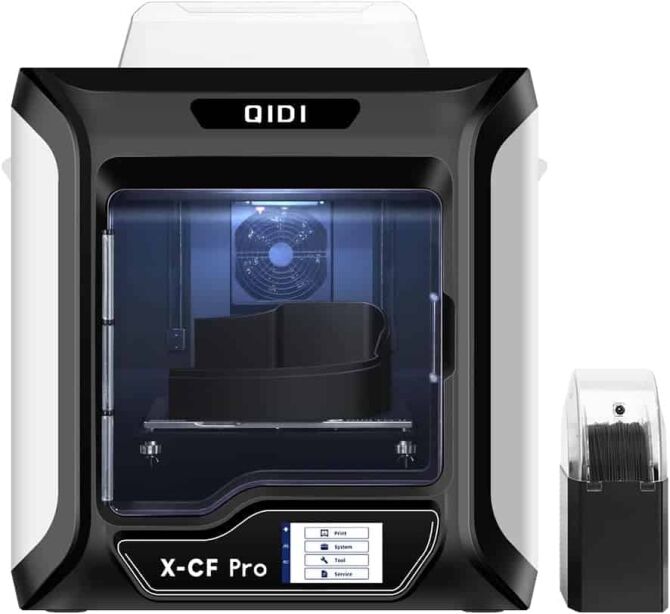
Specifications
- Build Volume: 300mm x 250mm x 300mm
- Filament: PLA, ABS, PETG, Nylon, Carbon Fiber
- Connectivity Technology: USB, WiFI
- Filetype: STL
What We Think
With a price point well below $2000, the X-CF Pro is a great alternative for consumer-grade carbon fiber 3D printing.
Reasons to Buy
- Detailed print results – the dual-gear extruder ensures accuracy even when printing with carbon fiber.
- Automated leveling – often overlooked in similar consumer-grade 3D printers, we welcome this feature in the X-CF Pro.
Reasons to Avoid
- Slow print speed – the 60mm/s extruder speed is somewhat unimpressive, especially given that there are more affordable 3D printers that can print faster.
The Qidi X-CF Pro is a great consumer-grade carbon fiber 3D printer boasting all the top features needed. From automatic leveling to large print volume, this printer truly has something for everybody.
The X-CF Pro features carbon fiber compatibility thanks to its high-temperature dual-gear extruder. These extruders can print standard filaments such PLA and ABS, along with exclusive QIDI filaments. To guarantee the printer’s accuracy and stability, it is equipped with a dual Z-axis structure and an industrial guide. What’s more – an ease-of-use feature we all greatly appreciate – the X-CF Pro comes pre-assembled to minimize the time between delivery and printing.
If we had to point out a flaw in this printer’s design, it would be the slow printing speed: at 60mm/s, it’s quite unimpressive compared to other top 3D printers. That said, for premium printing at a great price point, we highly recommend the QIDI X-CF Pro – the last, but far from the least, of our best carbon fiber 3D printers!
Features and Considerations
There are a number of key considerations you’ll want to factor in when looking for the best carbon fiber 3D printers. Here’s what to look out for.
Carbon Fiber Printing Techniques
There are two dominant carbon fiber printing techniques to choose from: chopped carbon fiber printing incorporates tiny chopped fibers inside the filament alongside a more pliable material such as PLA, Nylon, or PEEK. As such, the material is ready-mixed and primed to be printed from a single extruder. The ratio of carbon in the filament can change from manufacturer to manufacturer depending on the desired stiffness or strength.
On the other hand, continuous carbon fiber printing feeds fibers into the layers of a print during the printing process via the use of a dual extruder setup. One extruder lays down a polymer or other material, while the other applies a continuous secondary layer of carbon fiber. This method is favored for reinforcements and prints that need a more uniform distribution of carbon fiber. Continuous carbon fiber parts tend to be stronger than those printed using the chopped carbon fiber process.
Nozzle
The nozzle is one of the most important aspects of any 3D printer as it directly impacts the accuracy, consistency, and ultimately the final quality of the print. In the context of carbon fiber printing, the issue is further complicated by the qualities of the material: carbon fibers are tiny, sharp shards that can wear on the interior of the nozzle leading to precision issues and clogging.
To mitigate this, printer manufacturers and hobbyists adapting ordinary polymer printers for carbon fiber printing tend to fit in reinforced nozzles, usually made of hardened steel, which is much better equipped to handle the coarse properties of the material.
While hardened steel nozzles take care of the abrasive qualities of carbon fiber, they aren’t as heat conductive as traditional 3D printer nozzles, usually made of brass. As such, steel nozzles need to be paired with higher temperatures to compensate for this, something that a quality carbon filter printer will do by design.
Budget
It’s worth noting that printing with carbon fiber at a high standard is among the most expensive 3D printing techniques currently available due to the high cost of the machinery, technology, and filament involved in the process. While carbon fibers popularity and work on the manufacturer side to streamline production have lowered costs somewhat compared to a few years ago, carbon fiber printers are priced in the thousands of dollars, rather than the hundreds associated with hobbyist level FDM polymer printers. As such, be prepared to pay handsomely for the pleasure of owning one.
That said, the price differs substantially between the most premium, industrial-grade feature-rich carbon fiber printers and the more contextually affordable, desktop-friendly alternatives. 5,000to5,000 to 5,000to50,000 is a gap even well-financed operations can appreciate. It’s important to buy a printer that aligns with your aims and ambitions if only to avoid overspending or, on the flip side, to avoid a printer that doesn’t deliver the performance required for your needs and end products.
FAQs
Is carbon fiber PLA stronger than regular PLA?
No: Carbon fiber PLA might appear to be stronger than the regular PLA you’re used to but in fact it’s just more ‘stiff’, making your 3D prints less flexible.
What 3D printers can print carbon fiber?
To print with carbon fiber, 3D printers must have high extrusion temperatures of at least 200 degrees and use specialist nozzles – but also approval from the manufacturer to use carbon fiber with their 3D printer.
Verdict

Specifications
- Build Volume: 330mm x 240mm x 300mm
- Filament: PLA, ABS, CPE, Nylon, Carbon Fiber
- Connectivity Technology: USB, Ethernet, WiFi
- Filetype: STL, OBJ, X3D, 3MF
Boasting compatibility with a broad array of materials, including carbon fiber with a simple nozzle swap, superb print results, and plenty of quality-of-life features that score points for ease of use, the Ultimaker S5 takes the crown as our top pick for the best carbon fiber 3D printer! Though it can err on the slow side, the impressive innovation in the S5’s design makes it a keen competitor to other top-tier 3D printers!
For something a little more affordable than even our budget options, why not check out our guide on the best 3D printers under $300?
